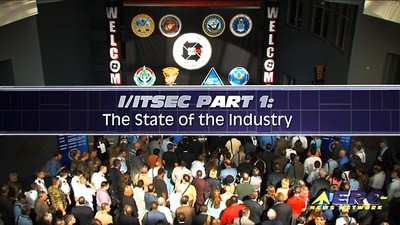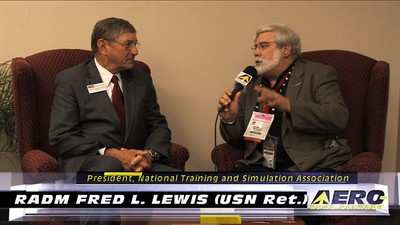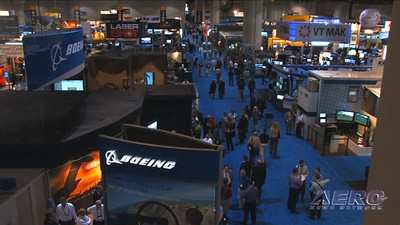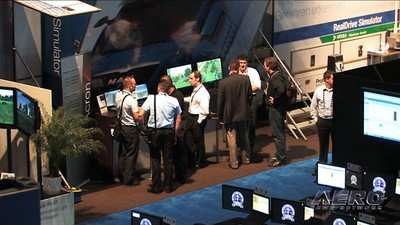Thu, Jan 13, 2011
One of the most truly fascinating events we cover each year is
the annual I/ITSEC event in central Florida. Known more formally as
the Interservice/Industry Training, Simulation and Education
Conference, 'I/ITSEC' promotes cooperation among the Armed
Services, Industry, Academia and various Government agencies in
pursuit of improved training and education programs, identification
of common training issues and development of multiservice
programs.

Initiated in 1966 as the Naval Training Device Center/Industry
Conference, the conference has evolved and expanded through
increased participation by the Army, Air Force, Marine Corps, Coast
Guard, and Industry. In 1979 it became known as the
Interservice/Industry Training Equipment Conference. The Services
have steadily evolved toward a total systems philosophy in the
acquisition of training equipment and training delivery systems. In
1986 the Conference name was further refined to the
Interservice/Industry Training Systems Conference (I/ITSC) to
recognize the increased importance of Manpower, Personnel, and
Training aspects in the systems acquisition process.

In 1992 the name was further changed to the
Interservice/Industry Training Systems and Education Conference
(I/ITSEC) to reflect the consolidation of the Manpower and Training
Committee (MTC) and the Technology and Innovations in Training and
Education (TITE) Conference with I/ITSEC. This change emphasizes
the importance of education and the man-machine interface in
meeting force-training requirements through simulation training. In
1997, to reflect continued growth and changes in the industry, the
conference name was refined to the Interservice/Industry Training,
Simulation and Education Conference (I/ITSEC).

ANN was fortunate enough to score an intriguing and insightful
interview with the President of the National Training and
Simulation Association, RADM Fred Lewis (USN-Ret) about the
military simulation industry and the critical issues that may
determine its future. Admiral Lewis is a man who understands the
value of simulation based on years of hard experience in the real
world. Lewis graduated from the U.S. Naval Academy in 1962 and was
designated a naval aviator in November 1963.

After an initial tour of duty as a flight instructor, he trained
in the F-4 Phantom and participated in numerous operational
deployments to the Atlantic and Pacific and twice deployed to the
Gulf of Tonkin for combat operations over North Vietnam.
Subsequently, he attended the U.S. Naval Test Pilot School and led
the stand-up of the Atlantic Fleet’s F-14 FRS. During a 33
year career, he accumulated over 6,500 accident-free flying hours
in tactical aircraft and over 1,200 carrier arrested landings.
More News
He Attempted To Restart The Engine Three Times. On The Third Restart Attempt, He Noticed That Flames Were Coming Out From The Right Wing Near The Fuel Cap Analysis: The pilot repor>[...]
Make Sure You NEVER Miss A New Story From Aero-News Network Do you ever feel like you never see posts from a certain person or page on Facebook or Instagram? Here’s how you c>[...]
From 2009 (YouTube Edition): Leading Air Show Performers Give Their Best Advice for Newcomers On December 6th through December 9th, the Paris Las Vegas Hotel hosted over 1,500 air >[...]
Aero Linx: NASA ASRS ASRS captures confidential reports, analyzes the resulting aviation safety data, and disseminates vital information to the aviation community. The ASRS is an i>[...]
“For our inaugural Pylon Racing Seminar in Roswell, we were thrilled to certify 60 pilots across our six closed-course pylon race classes. Not only did this year’s PRS >[...]
 NTSB Final Report: Rutan Long-EZ
NTSB Final Report: Rutan Long-EZ ANN FAQ: Turn On Post Notifications
ANN FAQ: Turn On Post Notifications Classic Aero-TV: ICAS Perspectives - Advice for New Air Show Performers
Classic Aero-TV: ICAS Perspectives - Advice for New Air Show Performers ANN's Daily Aero-Linx (06.28.25)
ANN's Daily Aero-Linx (06.28.25) Aero-News: Quote of the Day (06.28.25)
Aero-News: Quote of the Day (06.28.25)






